D
Deleted member 645
Guest
Interesting. Keep up the good you guys!
Samsung's 3 nm process node apparently allows 35% area reduction, 30% performance increase, and 50% power consumption decrease.Today is the first day of Samsung Foundry Forum 2021. And Samsung Foundry announced that:
And Samsung Foundry mentioned that wafer production is expected to double from 2021 to 2026, with Samsung Foundry mentioning that wafer production increased by 1.8x from 2017 to 2021, and Samsung Foundry mentioning that wafer production is expected to increase by 3.2x from 2017 to 2026.
- Samsung's 3GAE process node will start mass production by EoY 2022
- Samsung's 3GAP process node will start mass production in EoY 2023
- Samsung's 2GAP process node will start mass production in 2025
So far, there's no mention of Samsung's 8LPA process node, although Samsung's 17LPV (Low Power Value) process node was announced today, which combines the FinFET transistors from Samsung's 14LPP process node with the Back-End-Of-Line (BEOL) from Samsung's 28 nm process node.
The relevant information probably has more to do with the DLSS model*'s successor than the DLSS model* itself.
Samsung's 3 nm process node apparently allows 35% area reduction, 30% performance increase, and 50% power consumption decrease.
First time in a thread like this, and I will open with a question, do you guys consider The switch a 8th or 9th gen console?

Hard to say, hardware strength and feature has never been the true indicator of what is one gen and what is another, but I’d say based solely on the previous device it’s Nintendo’s 6th gen portable device. They have 6 gems of portables yes. Or 7th if you include the VB.First time in a thread like this, and I will open with a question, do you guys consider The switch a 8th or 9th gen console?
I think it depends on how complicated Samsung's implementation of Gate-All-Around Field Effect Transistor (GAAFET) is to execute. But I'm rather pessimistic, considering Samsung apparently still fails to improve yields for Samsung's 5 nm*/4 nm* process nodes, based on rumours so far.Hm should we parse those improvements as sth which occur simultaneously or choose one over the others?
Also I'm curious if they will manage to improve yield over their allegedly problematic 5nm litho.
I reject the premise of the question.First time in a thread like this, and I will open with a question, do you guys consider The switch a 8th or 9th gen console?
Specially to Intel that jumped from 14nm++++++++++++++ to like 7nm and to 20A in the future just like that, Thanos snap and all.* nm is purely a marketing nomenclature for all the foundry companies
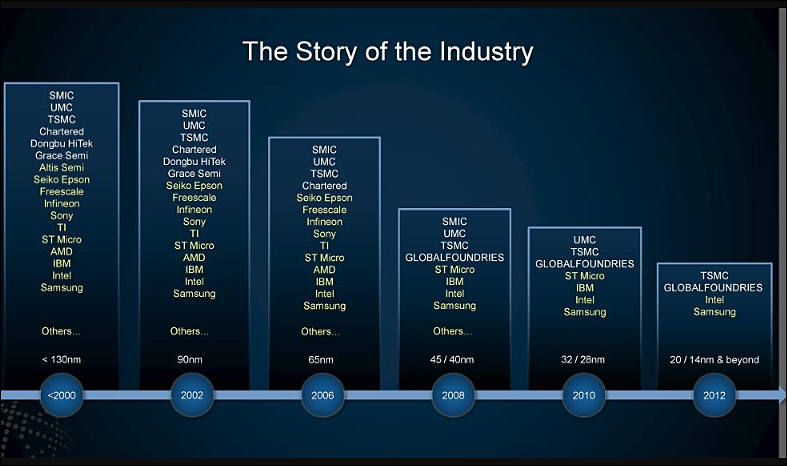
Specially to Intel that jumped from 14nm++++++++++++++ to like 7nm and to 20A in the future just like that, Thanos snap and all.
As an aside note look at this pretty picture:

I talked about overconsolidation of the silicon industry in a previous post.
I don’t know. But I will speculate that it’s because they are the opposite of a fabless company, as in they are a pure manufacturer of chips, and maybe that allowed them to focus solely on the manufacturing side leaving the designing work to the fablessAn offtopic question but Ill ask it anyway because it confuses me somewhat. Why is TSMC ahead of Samsung and Intel in process nodes even though they all use the same ASML EUV machines?
I think one reason is that TSMC has the most EUV lithography machines out of the three foundry companies.An offtopic question but Ill ask it anyway because it confuses me somewhat. Why is TSMC ahead of Samsung and Intel in process nodes even though they all use the same ASML EUV machines?
Wait, is 12 CPU cores what were expecting? I assumed 8.On the topic of custom, custom can be a very major thing, it could also be pretty much nothing significant.
Stock would be off the shelf, the custom in the NSW case, that we know of, is that the A53s were turned off because quite frankly, they were useless and even Nintendo saw that.
But, all TX1s since then have been like the one in the Switch, aka A53s not on.
In relation to our Denmark friend the black knight, Dane has some customization done to it to accommodate for Nintendo's needs, based off the ORIN family of systems. It had no need for a DLA, so that can be removed. Has no need for any automotive parts, doesn't need that many SMs to do its job, and doesn't need that many CPU cores either for its purpose.
Cut down variant.

As you can see, a significant portion of ORIN, probably over 50%, is solely to things not game related most likely.
6-8 CPU cores, 6-8 gigs of ram. Someone else can talk about the number of GPU cores. We're expecting more modern GPU and CPU cores none the less, and probably more and maybe faster storage. The big feature is possibly DLSS for 4k output or to bring games that struggle to hit 1080p to 1080p.I honestly hope the Switch 4K doesn’t allow people to play games off of an SD card. I want fast storage for short load times.
Wait, is 12 CPU cores what were expecting? I assumed 8.
Nintendo will always add gimmicks, hopefully the next one is a good one (unlike the Wii U tablet). I think most of the time they introduce good ones though.6-8 CPU cores, 6-8 gigs of ram. Someone else can talk about the number of GPU cores. We're expecting more modern GPU and CPU cores none the less, and probably more and maybe faster storage. The big feature is possibly DLSS for 4k output or to bring games that struggle to hit 1080p to 1080p.
There's a lot of argument if 720p is fine for that screen size, or if they'll bump to 1080p. I think we can rely on it being OLED.
The wild card is if Nintendo will have a gimmick or not (like the Analog Stick on the n64, the triggers on the GC controller, motion control like the Wii, or the separate screen like the Wii U).
Personally, I think the gimmick will be minor and will not shake the boat - possibly the inclusion of analog triggers. I think they'll probably follow the PS1 -> PS2 transition - more of the same but better with full backwards compatibility that slightly enhances things. In the PS2, it was faster loading times due to the faster optical drive, with a bonus of DVD playback.
12 CPU cores is for Orin, not for Dane, considering Dane's a custom variation of Orin, according to rumours.I honestly hope the Switch 4K doesn’t allow people to play games off of an SD card. I want fast storage for short load times.
Wait, is 12 CPU cores what were expecting? I assumed 8.
Sadly you are right. I personally never used hdrumble. Wish that money was spent on something else.Nintendo will always add gimmicks, hopefully the next one is a good one (unlike the Wii U tablet). I think most of the time they introduce good ones though.
and call it the virtual boy 2 /sHi first time posting. In my opinion it'll probably be something along the line of augmented reality or VR of some kind. Seems like the next logical step for Nintendo.
I think that gimmick is there, but it will not in the primary form factor.Hi first time posting. In my opinion it'll probably be something along the line of augmented reality or VR of some kind. Seems like the next logical step for Nintendo.
I have no idea so far.
The only chip I can potentially think of is the PI3USB31532 chip, a USB 3.2 Gen 2 (or USB 3.1 Gen 2)/DisplayPort 1.4 crossbar switch chip, considering the OLED model's dock's using a DisplayPort 1.4 to HDMI 2.0b converter chip, but I'm not very sure if that's what you're asking for, considering the PI3USB31532 chip is probably inside the OLED model, not inside the OLED model's dock.
I've thought on this more and I might just be wrong. A dedicated mux might not actually be necessary.I found this blog post from Netherlands that compiled pretty much all available technical info about the OLED Model. Funny enough, the blogger also cited this thread. (Hi!) Their chip comparison table for the dock is very handy [Google translated]:

@Jersh Looks like there's no mux chip, unless it's hidden.
I don't think that was a bad choice, it seems the industry is moving towards better rumble anyway, given the PS5 uses it too. The IR camera may have been a bad choice as basically nothing uses it.Sadly you are right. I personally never used hdrumble. Wish that money was spent on something else.
Ring-Fit lolI don't think that was a bad choice, it seems the industry is moving towards better rumble anyway, given the PS5 uses it too. The IR camera may have been a bad choice as basically nothing uses it.
To me, holiday 2022 is the earliest I expect the DLSS model* to be launched.Sorry but just so I can catch up on the speculation: general consensus based in insider knowledge, lineup and chip information is 2022 release of a 4K Switch?
IR camera use: Ring Fit, Labo, Game Builder Garage, Mario Kart Live, Brain Training (I think).I don't think that was a bad choice, it seems the industry is moving towards better rumble anyway, given the PS5 uses it too. The IR camera may have been a bad choice as basically nothing uses it.
Nintendo should get rumble that matches the quality of PS5’s and call it 4K Rumble.I don't think that was a bad choice, it seems the industry is moving towards better rumble anyway, given the PS5 uses it too. The IR camera may have been a bad choice as basically nothing uses it.
Thank you very much for answering.To me, holiday 2022 is the earliest I expect the DLSS model* to be launched.
I think space becomes an issue, since the motors in the Switch and PS5 are different despite being from the same factory and company.Nintendo should get rumble that matches the quality of PS5’s and call it 4K Rumble.
Probably not in terms of the CPU, although the difference in terms of CPU performance won't be big, but probably in terms of the GPU.Do you guys think Nintendo will be using soc that's stronger as current 2021 mobile chips such as SD888 when they're going to release the next Switch console in 2023/2024?
~
Although this is related to the Nintendo Switch, but not to the DLSS model*, I think I found some comparisons between Jaguar and the Cortex-A57 that I think @Look over there might find interesting.
Typically, performance and power as they're presented in marketing material are choose one over the other. Like these nodes are usually promoted as '+X% performance/frequency at target power' or '-Y% power at target performance/frequency'.Hm should we parse those improvements as sth which occur simultaneously or choose one over the others?
Also I'm curious if they will manage to improve yield over their allegedly problematic 5nm litho.
I don't know what's going on with Samsung, but for Intel, the story I see is that back when they still had the lead with 14nm (before all the +'s, so mid 2010's), they got too ambitious with the leap they wanted to make with their 10nm node + supposedly upper management didn't spend enough in the right places = giant hole to dig out of. Hubris can be a killer. I'm not sure if the version of 10nm that's used to make consumer products right now matches up with the original vision.An offtopic question but Ill ask it anyway because it confuses me somewhat. Why is TSMC ahead of Samsung and Intel in process nodes even though they all use the same ASML EUV machines?
HD rumble is underutilized/misused/ignored by most 3rd parties. When it's done right, IMHO it enriches the gaming experience: Clubhouse Games, Luigi's Mansion 3, Super Mario Party, Mario + Rabbids (a rare example of good 3rd party HD rumble), etc. Sony seems to be doing a better job convincing 3rd parties to support haptic feedback. I wonder what Nintendo can do to improve HD rumble's adoption.Sadly you are right. I personally never used hdrumble. Wish that money was spent on something else.
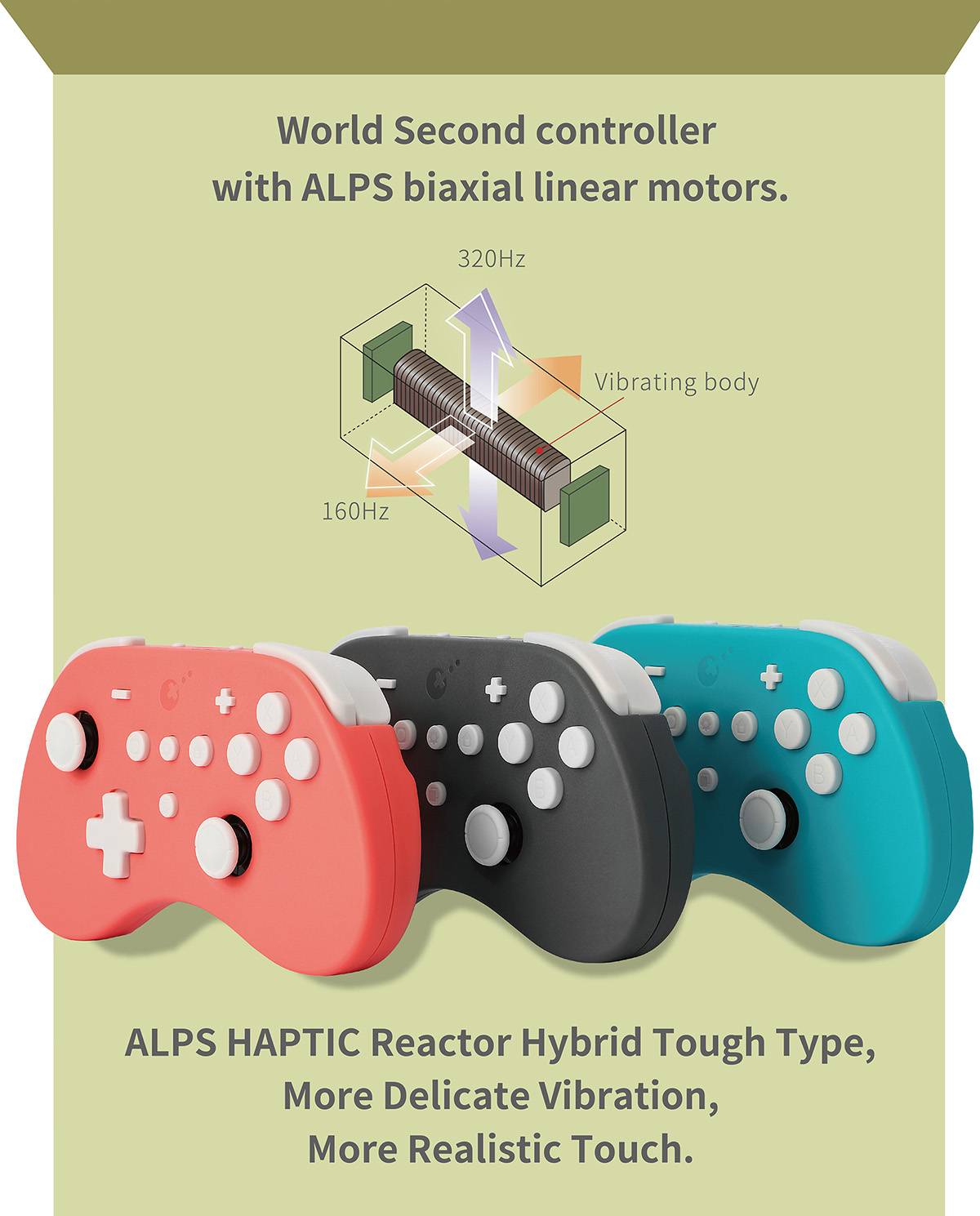

At least games on Switch are more likely to support gyro aiming, unlike on PS4/5 (do the XBSX/S controllers have gyro even?)HD rumble is underutilized/misused/ignored by most 3rd parties. When it's done right, IMHO it enriches the gaming experience: Clubhouse Games, Luigi's Mansion 3, Super Mario Party, Mario + Rabbids (a rare example of good 3rd party HD rumble), etc. Sony seems to be doing a better job convincing 3rd parties to support haptic feedback. I wonder what Nintendo can do to improve HD rumble's adoption.
On a related note, I'd been on the lookout for 3rd party controllers that replicate HD rumble. It was a fruitless search because even the officially licensed Hori and PowerA controllers don't. There are some products on Amazon claiming the feature, but the reviews expose them as untruthful. Finally this year two 3rd parties released controllers with linear actuators (instead of the traditional vibrating motors) that are truly capable of HD rumble:
GuliKit Elves Pro

AmiiPad

Do you guys think Nintendo will be using soc that's stronger as current 2021 mobile chips such as SD888 when they're going to release the next Switch console in 2023/2024?
Probably not in terms of the CPU, although the difference in terms of CPU performance won't be big, but probably in terms of the GPU.
Do you guys think Nintendo will be using soc that's stronger as current 2021 mobile chips such as SD888 when they're going to release the next Switch console in 2023/2024?
Mm, probably, but also probably not. It’s more complex than thatProbably not in terms of the CPU, although the difference in terms of CPU performance won't be big, but probably in terms of the GPU.
I hope it has SD card support, though. If only to store old switch games or whatever, like the way Series X supports old hard drives.I honestly hope the Switch 4K doesn’t allow people to play games off of an SD card. I want fast storage for short load times.
Wait, is 12 CPU cores what were expecting? I assumed 8.
here's a fun hypothetical: FSR Performance mode on a 720p game
Yeah hopefully the next switch really brings a lot to the table. I say again for me hardware doesn’t matter. If publishers aren’t supporting with the their big IPs then I will just stick with OLED. Will upgrade to next squat some point but it wouldn’t be a must buy just because of a performance boost.I've said it before, FSR and other upscaling methods are the future and we likely are going to enter the death of native resolution with UE5's Upsampling, FSR, and that likely will accelerate when the Dane comes out as it brings DLSS into the fold.
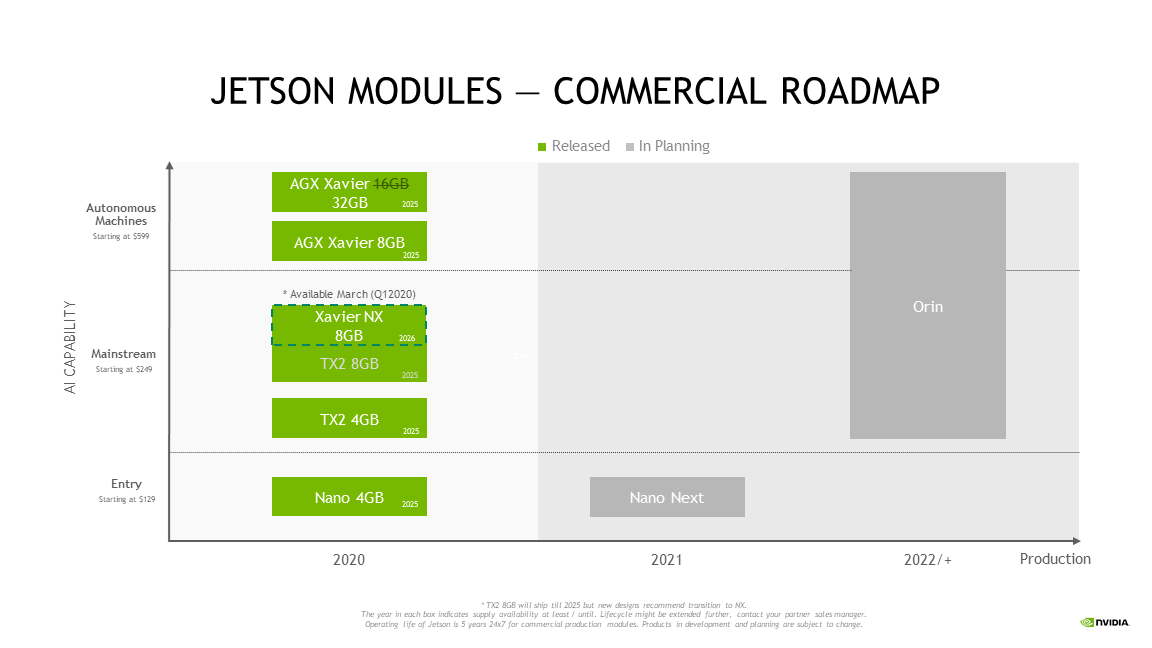
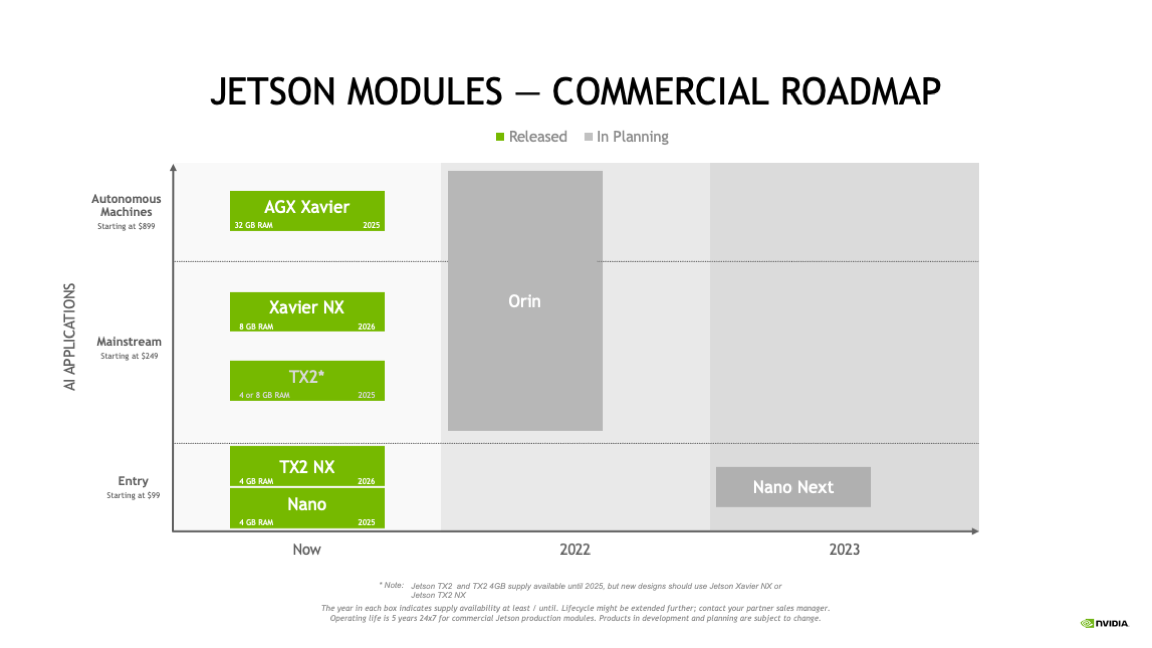
The hardware thread title should be “I Sell Pro/Dane and Pro/Dane Accessories”
it does make it feel like Dane was to come ahead of Orin. but to have enough binned chips for the Jetson Nano? sounds like Nvidia didn't have too high expectations of SamsungI wonder if Dane not being able to be taped out has anything to do with Nano Next being delayed from 2021 to 2023, considering the differences between the Jetson roadmap at around January 2020 and the Jetson roadmap at around February 2021.


(Part 2)First of all, what motivated you to develop Nintendo Switch – OLED Model?
Yamashita: In the early stages of development of the Nintendo Switch system, we were considering the development of the hardware variations, and our idea was to expand the Nintendo Switch platform in various ways. Therefore, we were thinking of releasing a new model of Nintendo Switch at some point, after the first release of Nintendo Switch. However, at that time, we hadn't decided exactly what specific functions we would update, and while we were developing Nintendo Switch Lite, we were hoping to offer a new model not only for people who are buying one for the first time, but also for those who are thinking of buying an additional model after purchasing the original.
Shiota: As Mr. Yamashita mentioned, I also wanted to launch a new model of Nintendo Switch. However, at the conceptual stage, we didn't have any specific ideas about what features we wanted to include. Since the release of Nintendo Switch in 2017, we came up with various ideas, did some technical testing, gathered those results, and finally created the new model that you see now, which we are finally able to launch. The backstory is during the trial-and-error period, we considered some different technologies, and by referring to how our customers played with Nintendo Switch, we decided on the ideas and technologies adopted in the new model.
(Part 3)And you didn't want to change the thickness of the console?
Yamashita: No, in terms of the compatibility of Nintendo Switch – OLED Model being able to fit in the existing Nintendo Switch dock, the thickness isn't something we could easily change. Also, if we made it thicker, then there would be a gap when you attach the Joy-Con controllers. That wouldn’t be a good fit, so making the console thicker wasn't an option. By the way, we changed the material for the stand from plastic to metal, and this is because compared to plastic, metal can be made thinner while still maintaining its strength. This is another thing that isn't mentioned on the official website, but you might notice when you try it out.
Shiota: We could make the stand thinner by using metal, but because the surface area of the stand was bigger, even with the thinner OLED display it still wasn't enough. The people in charge of the stand and the display discussed things like changing the thickness of the display screen cover, and in the end they worked together to make many adjustments, stretching the limits.

Is the device heavier because of the new metal stand?
Shiota: To have hinges that can support the stand at any angle already makes it pretty heavy, but when you replace plastic with metal, even at the same volume, it will be considerably heavier. But, for the overall weight of the console unit, it’s an increase of only about 20g. To put it differently, it's because we scaled down in other places. Even with the original Nintendo Switch, we naturally tried to scale down everywhere we could to make it as light as possible, so it was not easy to find something we could scale down even further. But thanks to the help of the mechanical engineers, they came up with various ideas of scaling down while still maintaining its strength, and I believe we were able to achieve our goal.
Were new onboard speakers part of the original plan for the new model?
Yamashita: During the development of the new model, we wanted to achieve the same or better audio quality and acoustic pressure than existing Nintendo Switch models. When we tried using the open-type speakers , which we were using on our previous models, in the new model, we found that due to design restrictions, the sound ended up being quieter than before. We made some attempts to see if we could improve the design keeping the same speakers, but in the end we decided to use closed-type speakers, where the sound quality and pressure can be increased thanks to the back of the speaker being sealed.
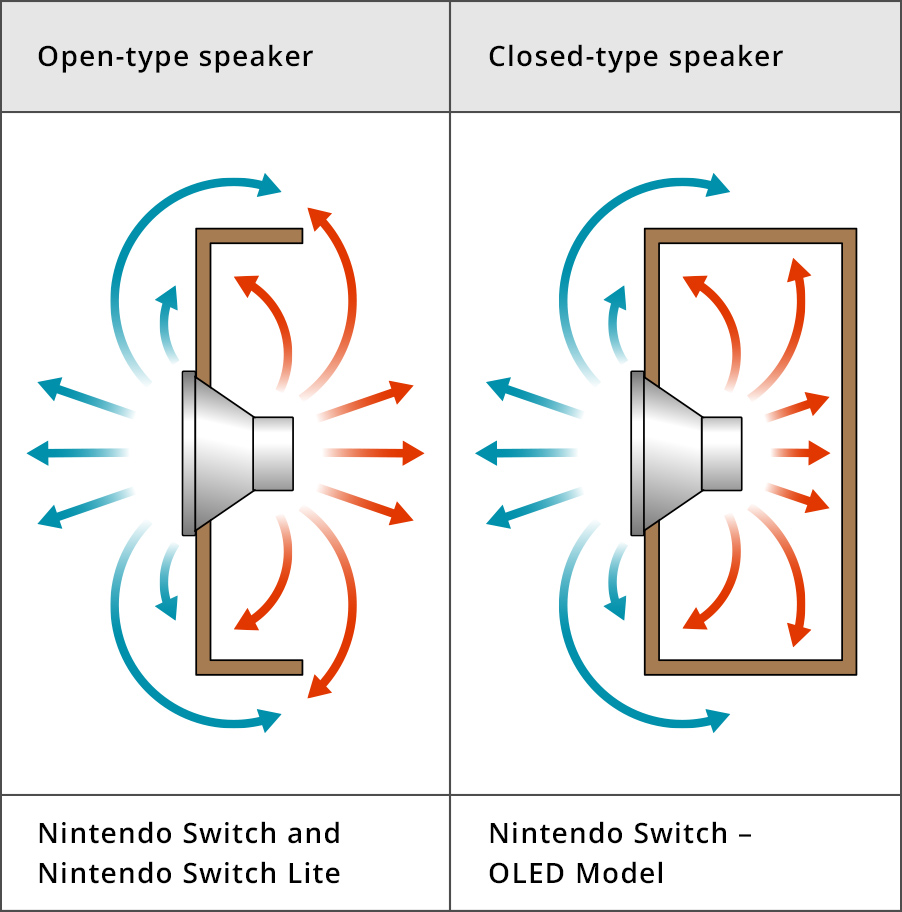
But doesn't the sound get muffled if it's sealed?
Yamashita: Speakers produce sound from both the front and back by their vibrations. Closed-type speakers produce a clearer sound by preventing the collision of sound coming from the front and back. These closed types are often also used in smartphones and tablets, but those devices mostly use speakers that are already manufactured in a closed format and are incorporated as is. But, in order to adopt speakers that would be as big as possible within the limited space inside Nintendo Switch – OLED Model while producing satisfactory audio quality and acoustic pressure, we needed to use the structure of the console and design a sealed space at the back ourselves.
So using open-type speakers like before would reduce the volume, but in order to use closed-type speakers you'd have the difficulty of creating a sealed design in order to produce a clear sound.
Yamashita: Yes. If the seal is not intact, then the audio quality would be reduced despite changing the speakers. So the biggest challenge was preparing a space to install the speaker while assuring there is space for the sealed area, to create clearer vibrations within a limited space.
We talked about the sound from the speakers being louder, but did this change the power consumption?
Yamashita: Strictly speaking, the maximum amount of power that can be sent to the speakers is higher than the current Nintendo Switch models. In actuality, however, speakers aren't usually used in a way to constantly output their maximum volume, so overall there is barely any difference in power consumption.
Shiota: Still, the maximum power consumption happens when it's outputting at the maximum volume, so we have decided the settings by considering the balance of how much power we should allow it to use and by considering the circuitry as a whole. From an overall perspective, changing the speakers hasn't led to a reduction of battery life.
Yamashita: With this new model, we have challenged ourselves to adjust, without changing the circuitry itself, the various settings in order to create a clear sound while enabling as much volume as possible, and this setting adjustment was extremely difficult.
Shiota: Rather than independently improving the speakers, mechanical design, and power, like with the OLED display, all developers combined many minor adjustments to increase the performance of the speakers overall.
Yamashita: Speaking about the adjustments of the speakers, a developer who worked on the sound adjustments has noticed that he could more easily detect the abnormal sounds using the sound of a piano, so he was adjusting the sounds with the piano piece that he himself composed. He said he had never imagined that an engineer like him would ever compose music.
(Part 4)The HDMI cable is also different. I quite like this change; please feel how flexible it is.
(Touching) Indeed, softer than the one that was previously included.
Yamashita: Improving cables has been considered for a long time, and some of our staff had been working on it, and it happened to align with the release of Nintendo Switch – OLED Model.
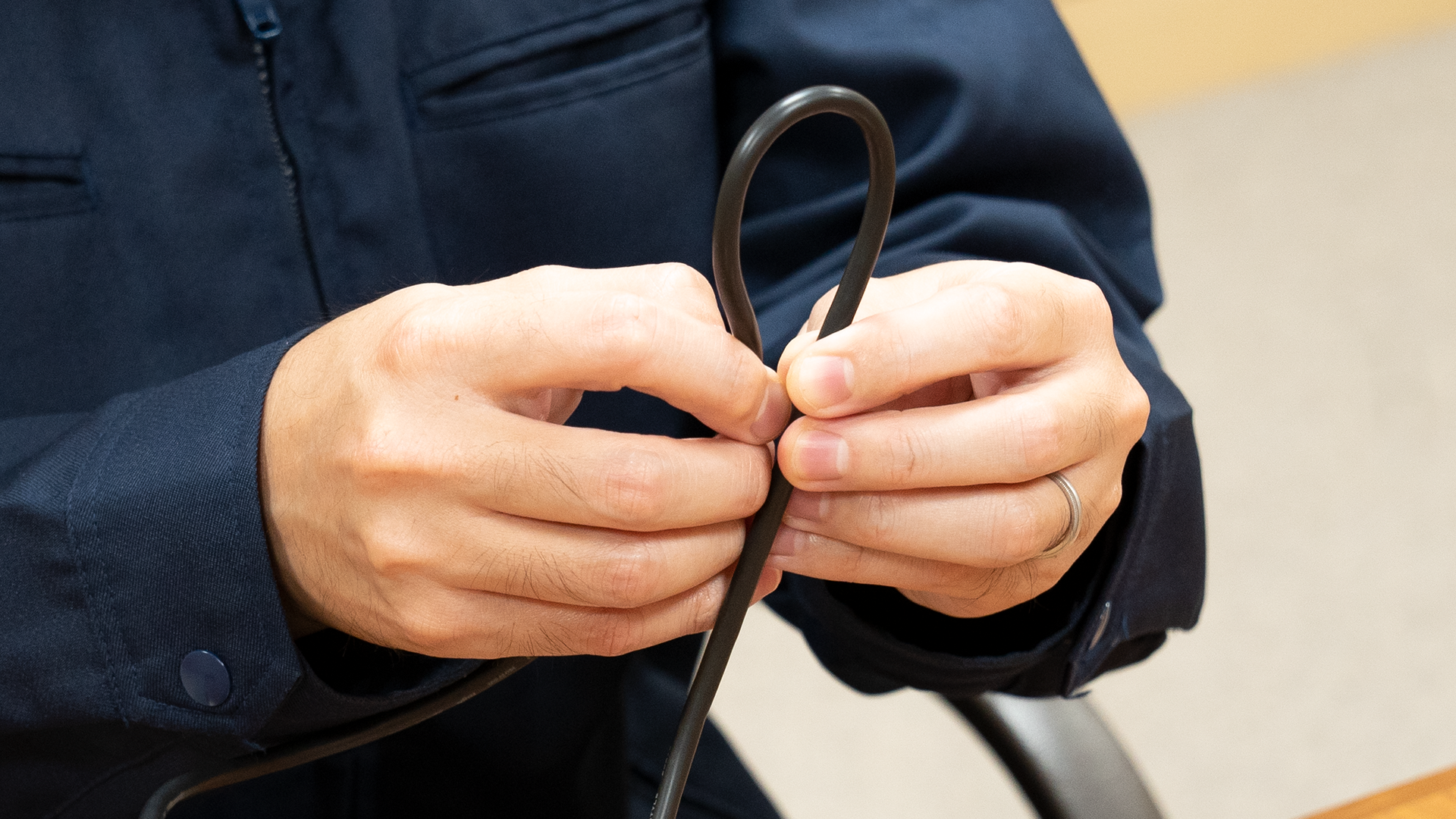
Another major characteristic of Nintendo Switch is the Joy-Con controllers. A big part of the user experience comes from the Joy-Con, but were there any improvements?
Yamashita: Joy-Con controllers have lots of different features, so we've been continuing to make improvements that may not always be visible. Among others, the analog-stick parts have continuously been improved since launch, and we are still working on improvements.
The analog stick at first release cleared the Nintendo reliability test using the method of rotating the stick while continually applying a load to it, with the same criteria as the Wii U GamePad’s analog stick.
As we have always been trying to improve it as well, we have investigated the Joy-Con controllers used by the customers and repeatedly improved the wear resistance and durability.
The parts of the Joy-Con analog sticks are not something that can be bought off the shelf but are specially designed, so we have undergone a lot of considerations to improve them. In addition, we improved the reliability test itself, and we have continued to make changes to improve durability and clear this new test.
When the effects of our improvements were confirmed, we promptly incorporated them into the Joy-Con controllers that are included with the console, Nintendo Switch Lite, and the ones sold individually, that were manufactured at that time. This involves the internal components of the Joy-Con, so you can't tell the improvements from the outside, but we use the new versions of the parts when we repair them. Also, similar continual improvements have been made for the Nintendo Switch Pro Controller as well.
Do you mean that, basically, wear is unavoidable as long as the parts are physically in contact?
Shiota: Yes, for example car tires wear out as the car moves, as they are in constant friction with the ground to rotate. So with that same premise, we asked ourselves how we can improve durability, and not only that, but how can both operability and durability coexist? It's something we are continuously tackling.
Yamashita: The degree of wear depends on factors like the combination of the materials and forms, so we continue to make improvements by researching which combinations are less likely to wear. We mentioned that the Joy-Con controller specifications hadn't changed in the sense that we didn't add new features such as new buttons, but the analog sticks in the Joy-Con controllers included with Nintendo Switch – OLED Model are the latest version with all the improvements. Needless to say, so are the analog sticks included in Nintendo Switch, Nintendo Switch Lite, separately sold Joy-Con controllers, and the Nintendo Switch Pro Controller that are currently being shipped.
Hearing the basis and testing for some of design decisions is fascinating. We usually don't get glimpses like this into their design methodology. Thanks for sharing.
And you didn't want to change the thickness of the console?
Yamashita: No, in terms of the compatibility of Nintendo Switch – OLED Model being able to fit in the existing Nintendo Switch dock, the thickness isn’t something we could easily change. Also, if we made it thicker, then there would be a gap when you attach the Joy-Con controllers. That wouldn’t be a good fit, so making the console thicker wasn’t an option. By the way, we changed the material for the stand from plastic to metal, and this is because compared to plastic, metal can be made thinner while still maintaining its strength. This is another thing that isn't mentioned on the official website, but you might notice when you try it out.
Shiota: We could make the stand thinner by using metal, but because the surface area of the stand was bigger, even with the thinner OLED display it still wasn't enough. The people in charge of the stand and the display discussed things like changing the thickness of the display screen cover, and in the end they worked together to make many adjustments, stretching the limits.

Is the device heavier because of the new metal stand?
Shiota: To have hinges that can support the stand at any angle already makes it pretty heavy, but when you replace plastic with metal, even at the same volume, it will be considerably heavier. But, for the overall weight of the console unit, it's an increase of only about 20g. To put it differently, it's because we scaled down in other places. Even with the original Nintendo Switch, we naturally tried to scale down everywhere we could to make it as light as possible, so it was not easy to find something we could scale down even further. But thanks to the help of the mechanical engineers, they came up with various ideas of scaling down while still maintaining its strength, and I believe we were able to achieve our goal.
